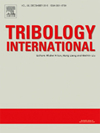所属分类:SCI期刊
Tribology International期刊基本信息

TRIBOL INT
0301-679X
3.517
SCIE、SCI
No
ENGLAND
Monthly
1968
Tribology International中文介绍
《Tribology International》是一本由ELSEVIER SCI LTD出版商出版的专业工程技术期刊,该刊创刊于1968年,刊期Monthly,该刊已被国际权威数据库SCIE、SCI收录。在中科院最新升级版分区表中,该刊分区信息为大类学科:工程技术 2区,小类学科:工程:机械 2区;在JCR(Journal Citation Reports)分区等级为Q1。该刊发文范围涵盖工程:机械等领域,旨在及时、准确、全面地报道国内外工程:机械工作者在该领域取得的最新研究成果、工作进展及学术动态、技术革新等,促进学术交流,鼓励学术创新。2021年影响因子为5.62,平均审稿速度约6.0个月。
Tribology International英文介绍
Tribology is the science of rubbing surfaces and contributes to every facet of our everyday life, from live cell friction to engine lubrication and seismology. As such tribology is truly multidisciplinary and this extraordinary breadth of scientific interest is reflected in the scope of Tribology International.
Tribology International seeks to publish original research papers of the highest scientific quality to provide an archival resource for scientists from all backgrounds. Written contributions are invited reporting experimental and modelling studies both in established areas of tribology and emerging fields. Scientific topics include the physics or chemistry of tribo-surfaces, bio-tribology, surface engineering and materials, contact mechanics, nano-tribology, lubricants and hydrodynamic lubrication.
Tribology International中科院分区
| 大类学科 | 分区 | 小类学科 | 分区 | Top期刊 | 综述期刊 |
| 工程技术 | 1区 | ENGINEERING, MECHANICAL 工程:机械 | 1区 | 是 | 否 |
Tribology International期刊近9年JCR分区变化趋势
Tribology InternationalJCR分区(JCR2021-2022年分区)
| JCR分区等级 | JCR所属学科 | 分区 | 影响因子 |
| Q1 | ENGINEERING, MECHANICAL | Q1 | 5.62 |
Tribology International期刊近7年影响因子变化趋势
Tribology International期刊的CiteScore值(CiteScore2021-2022年CiteScore值)
| CiteScore | SJR | SNIP | 学科类别 | 分区 | 排名 | 百分位 |
| 9.30 | 1.463 | 2.140 | 大类:Engineering 小类:Mechanical Engineering | Q1 | 35 / 601 |
94% |
| 大类:Engineering 小类:Mechanics of Materials | Q1 | 29 / 384 |
92% |
|||
| 大类:Engineering 小类:Surfaces, Coatings and Films | Q1 | 13 / 129 |
90% |
|||
| 大类:Engineering 小类:Surfaces and Interfaces | Q1 | 8 / 57 |
86% |
Tribology International期刊近7年自引率变化趋势